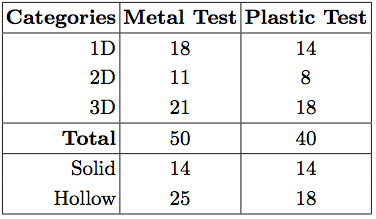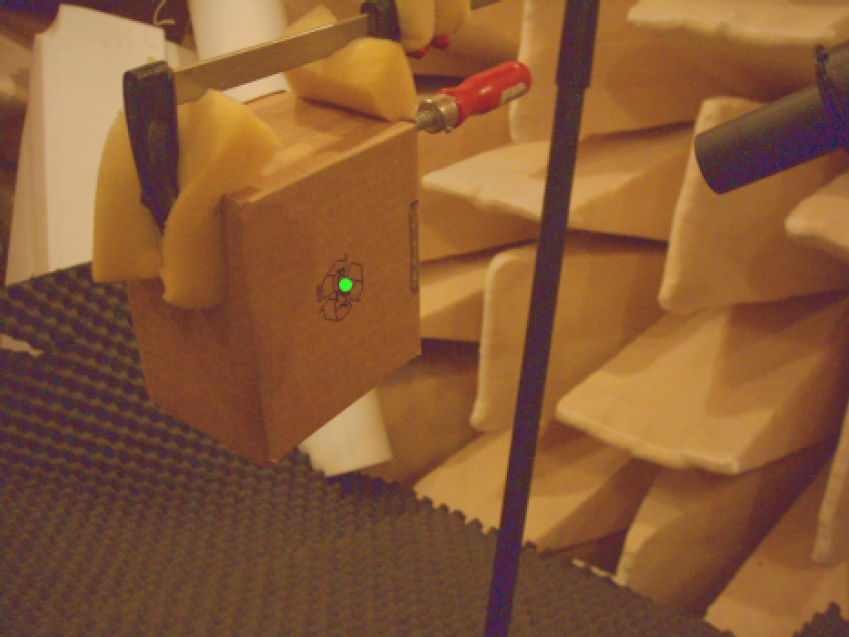Perception of Material and Shape of Impacted Everyday Objects
Authors: Rakovec C.E., Aramaki M., Kronland-Martinet R.
Publication Date: October 2013
Journal: Proc. of the 10th International Symposium on Computer Music Multidisciplinary Research (pp. 943-959, Marseille, France, October 15-18, 2013)
Tags: Solid Sounds
Abstract
In this study, we focused on the establishment of perceptual categories of shapes and materials associated with everyday objects, in the perspective of setting up high-level controls in an impact sound synthesizer. For that purpose, impact sounds were recorded from everyday objects covering various physical attributes, i.e., seven types of materials (Metal, Wood, Plastic, Glass, Stone, Ceramic and Cardboard) and five types of shapes (Solid 1D, Hollow 1D, 2D, Solid 3D and Hollow 3D), and resynthesized with signal parameters estimated from a high-resolution method (ESPRIT). Listening tests were conducted on these sounds to define perceptual categories and evaluate their relevance. Perspectives in terms of their acoustic description are finally discussed.
This presentation have been made for CMMR 2013
The Sound Data Bank
Examples of recording configuration of impact sounds on everyday objects in the anechoic chamber (a green dot shows the impact position):
– a solid wood bar

– a hollow cardboard box
Examples of synthesized impact sounds, with the estimated signal parameters from the high-resolution ESPRIT method, in comparison to the original ones:
Screen-views of the listening tests conducted in Experiment I:
The Listening Tests
– the training interface (the corresponding sounds are those given above)
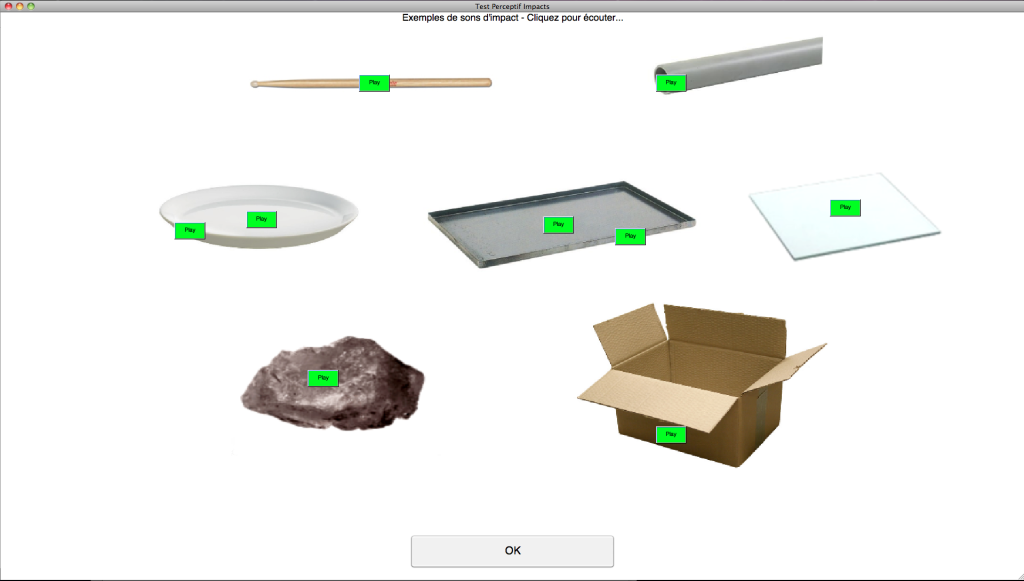
– the test interface
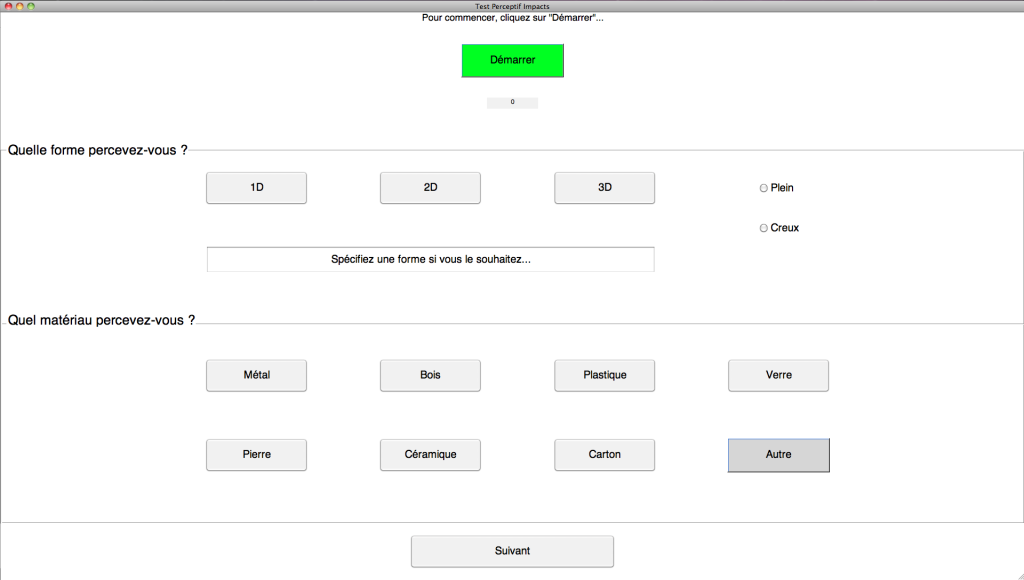
Distribution of sounds within the actual categories for each test in:
– Experiment I
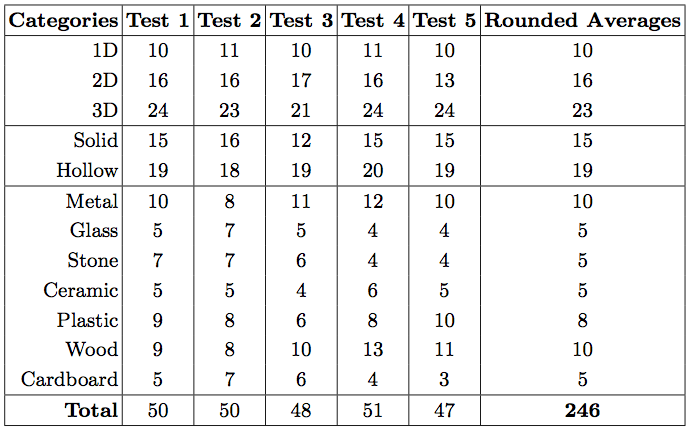
– Experiment II
